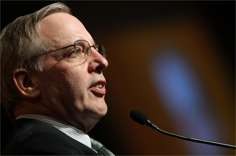Emerging-market bears are now few and far between
While developing economies have seen massive inflows recently, risks loom over Fed rate move and global economy

Emerging-market bears have been feeling somewhat lonely of late. At the beginning of this year, bearish views of developing economies were all the rage. As recently as May, shorting (selling securities prior to buying them with the aim of making a profit when their price falls) emerging markets was still one of the most crowded trades, according to a monthly survey published by Bank of America Merrill Lynch.
Yet over the past several months, especially since the end of June, investors have unwound their bearish bets on emerging markets and poured money into their foreign-exchange, equity and bond markets in search of higher returns amid a collapse in interest rates in many developed nations.
The shift in investor sentiment has been dramatic.
According to a separate survey published by Bank of America Merrill Lynch last month, fixed-income investors now have a small overweight position in emerging-market currencies.
This is not surprising, given that emerging-market foreign exchange has been one of the best-performing asset classes this year, with nearly half the gains occurring since the end of June when Britain voted to leave the European Union. The Brexit vote triggered a further decline in bond yields in advanced economies, with those in Europe and Japan falling deeper into negative territory, increasing the appeal of higher-yielding emerging-market assets.
According to JPMorgan, inflows into emerging-market bond funds have “outpaced inflows into risk assets elsewhere”, reaching US$17 billion since the start of July, with last month’s US$13.5 billion in inflows representing the largest monthly inflow since the bank began tracking subscriptions to debt funds in developing economies.
Even more remarkably, flows to emerging-market equity funds (which last year suffered huge outflows totalling US$64 billion) this year have now moved into positive territory following six weeks of large inflows, according to JPMorgan.
Yet it is emerging-market currencies, which last year bore the brunt of the deterioration in sentiment towards developing economies as oil prices continued to fall, that have been the greatest beneficiaries of the other main reason behind the rally in emerging-market assets: the weakness of the US dollar amid expectations that US interest rates are unlikely to rise further this year.
On Tuesday, the dollar index fell a further 0.7 per cent, taking its decline over the past month to nearly 3 per cent and causing the yen to flirt with the psychologically important level of 100 yen to the dollar.
The weaker dollar is providing support to commodity prices amid renewed hopes among investors of a freeze in production by members of the Opec oil cartel. Oil prices, having fallen sharply last month, have shot up 17.5 per cent this month, easing the strain on the developing world’s vulnerable energy exporters such as Russia and Malaysia.
JPMorgan even believes “the worst of the emerging-market fundamental downturn has passed”, with economic growth expected to pick up slightly in the second half of this year, underpinned by a stabilisation in oil prices and loose monetary policy.
Still, emerging markets are by no means out of the woods.

On Wednesday, futures markets were assigning a nearly 50 per cent probability to a rate rise by the end of this year, the highest odds since early June.
Secondly, a fresh burst of political risk is likely to weigh on market sentiment as the US presidential election campaign enters its final stretch in the run-up to the vote on November 8. While Donald Trump, the populist Republican candidate, is now trailing Hillary Clinton, his Democratic counterpart, in the polls, a Trump victory is still possible.
Finally, emerging-market economies are hardly roaring back to life. The Latin American region will contract this year, Russia is still in recession and China’s economy continues to slow as it struggles to rebalance away from investment.
Emerging-market bulls should not get carried away.
Nicholas Spiro is a partner of Lauressa Advisory